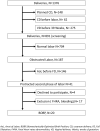Assessing feasibility and maternal acceptability of a biomechanically-optimized supine birth position: A pilot study
- PMID: 34506580
- PMCID: PMC8432866
- DOI: 10.1371/journal.pone.0257285
Assessing feasibility and maternal acceptability of a biomechanically-optimized supine birth position: A pilot study
Abstract
Background: In order to manage a protracted second stage of labor, "eminence-based" birth positions have been suggested by some healthcare professionals. Recent biomechanical studies have promoted the use of an optimized supine birthing position in this setting. However, uncertainty exists regarding the feasibility of this posture, and its acceptability by women. This pilot study primarily aimed to assess these characteristics.
Objective and methods: In this monocentric prospective study, 20 women with a protracted second stage of labor were asked to maintain a biomechanically-optimized position for at least 20 minutes at full dilatation. This posture is similar to the McRoberts' maneuver. Maintaining the position for 20 minutes or more was considered clinically relevant and indicative of feasibility and acceptability. Satisfaction with the position was assessed using a Visual Analogue Scale (VAS). A sub-group analysis was performed to assess eventual differences between more and less satisfied patients, according to the median of patients' satisfaction scores.
Results: Seventeen patients (85%) maintained the optimized position for at least 20 minutes. The median satisfaction score of these participants was 8 (interquartile range: 1) out of 10. No significant differences were found between the two sub-groups (satisfaction score <8 vs satisfaction score ≥8) regarding general and obstetric characteristics, as well as obstetrical and fetal outcomes.
Conclusion: The optimized position is acceptable and feasible for women experiencing a protracted second stage of labor. Further clinical studies are needed to assess the efficiency of such positions when women undergo an obstructed labor.
Conflict of interest statement
The authors report no conflicts of interest.
Figures
Similar articles
-
Maternal position in the second stage of labour for women with epidural anaesthesia.Cochrane Database Syst Rev. 2018 Nov 9;11(11):CD008070. doi: 10.1002/14651858.CD008070.pub4. Cochrane Database Syst Rev. 2018. PMID: 30411804 Free PMC article.
-
[Effects of double-catheter epidural analgesia by lidocaine injection respectively on the delivery outcomes and maternal-infant complications for persistent posterior or lateral occipital position of protracted active phase].Zhonghua Fu Chan Ke Za Zhi. 2020 Jul 25;55(7):457-464. doi: 10.3760/cma.j.cn112141-20191228-00705. Zhonghua Fu Chan Ke Za Zhi. 2020. PMID: 32842249 Clinical Trial. Chinese.
-
Birthing positions and mother`s satisfaction with childbirth: a cross-sectional study on the relevance of self determination.Arch Gynecol Obstet. 2025 Mar;311(3):591-598. doi: 10.1007/s00404-024-07770-1. Epub 2024 Nov 4. Arch Gynecol Obstet. 2025. PMID: 39495292 Free PMC article.
-
A prospective randomised trial on the effect of position in the passive second stage of labour on birth outcome in nulliparous women using epidural analgesia.Midwifery. 2004 Jun;20(2):157-68. doi: 10.1016/S0266-6138(03)00052-4. Midwifery. 2004. PMID: 15177859 Clinical Trial.
-
Effect of maternal birth positions on duration of second stage of labor: systematic review and meta-analysis.BMC Pregnancy Childbirth. 2019 Dec 4;19(1):466. doi: 10.1186/s12884-019-2620-0. BMC Pregnancy Childbirth. 2019. PMID: 31801479 Free PMC article.
References
Publication types
MeSH terms
LinkOut - more resources
Full Text Sources
Medical



